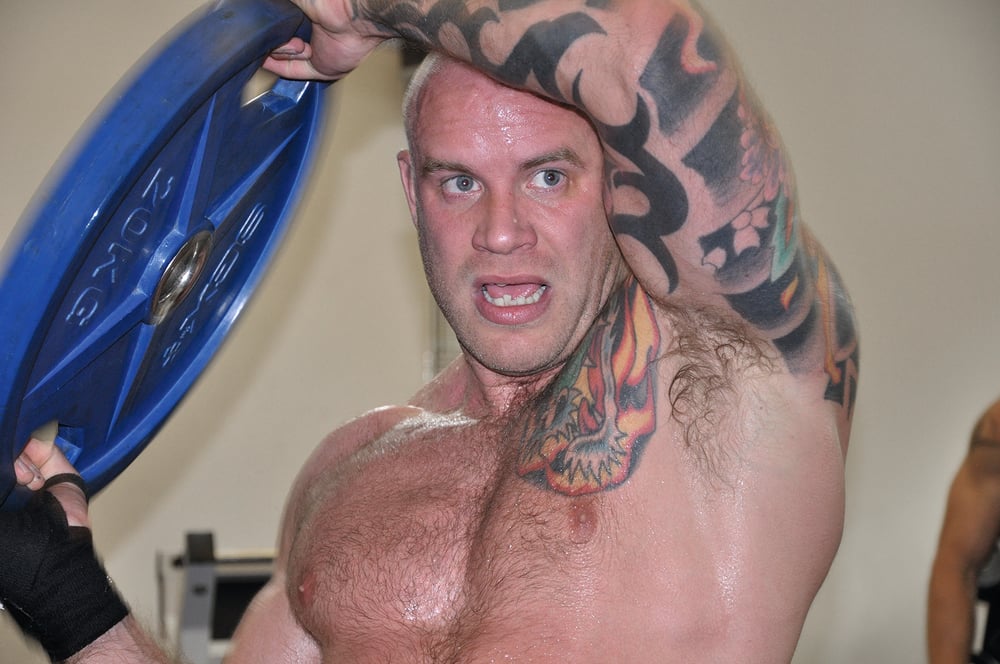
Issue 073
March 2011
Neurolinguistic Programming (NLP) is a controversial alternative therapy which involves deep psychological work. The technique is very popular in management, sales training and the military. It’s used to treat conditions like anxiety and post-traumatic stress disorder, and to help people realize their full potential (one of the most popular NLP books is titled Frogs to Princes).
NLP is a multilayered ‘science’ and a rather complex subject. But essentially it concerns how experiences affect our patterns of behavior or ‘learned reactions’. NLP claims that the mind sometimes can’t tell the difference between reality and imagination. So if negative memories are given a positive spin, this leads to more successful behavior. And that’s what we’re concerned with here: more-productive MMA. We’ll look at NLP hypnotherapist and prolific former kickboxer Gary Turner’s work with Ultimate Challenge MMA fighter Nick ‘Head Hunter’ Chapman as a case study.
Gary says his most fulfilling NLP work has been with individuals suffering from post-traumatic stress disorder. “I’ve worked with various soldiers, an aid worker who was kidnapped in Africa, firemen, police and paramedics, all of whom have suffered from the classic symptoms,” he says. “These include flashbacks and massive behavioral changes as a result of their experiences. It is so pleasing to hear how the flashbacks have stopped and their lives are returning to normal once more.” If NLP can work on people who’ve been exposed to war zones, it can help for mixed martial artists.

How Did Nick’s NLP Session Work?
Gary says: “Nick cleared me to give detailed information about this session. It's important to stress that anything a fighter comes to me for is always treated with confidentiality. The actual session lasted two hours.
“Nick came to me with a couple of goals including relaxing more when fighting and better cardio. We started with a chat about Nick’s aims. Every word you use has unconscious associations attached that give it a meaning personal to you. During our talk we discovered Nick had a confrontation issue which was, in his words, ‘holding me back.’
“A person’s identity is generally made up of ‘I’, ‘Me’, ‘Self’ and ‘You’, with each having a different mental representation. Led by his words I probed deeper into Nick’s representation of ‘Me’ and discovered it was tied to experiences he’d had when he was 21 years old. So we took the negative emotion away from these memories, allowing him to learn positively from these experiences. I then used a technique from integral eye movement therapy (IEMT) to update his identity, updating all of his relevant his memories from when he was 21 through to the present with these new resources intact.
“With this change Nick realized that, ‘it’s all about staying calm and relaxed,’ so we addressed this and I dropped him into hypnosis. Our minds work with metaphors – using one word or image to describe another. For example, Nick’s metaphor was that, ‘he was beating his fists onto a brick wall.’ Here the brick wall was the issue and ‘beating his fists’ was his strategy to overcome it. That obviously wasn’t working for him, so we explored new strategies for getting past this ‘wall.’ He discovered it was actually quite simple to climb over the wall instead.
“When you change someone’s metaphor, you change their way of thinking. And if you change their way of thinking you change their behavior. I brought Nick out of hypnosis and tested my work. Nick’s language had completely changed. He was telling me he’d ‘overcome this obstacle,’ that he ‘couldn’t see the problem anymore’ and instead he ‘could only see what he needed to do.’
“We then worked on a small anxiety-issue. Nick had been pressure tested by training partners and found that unhelpful to his performance. This conversation flowed into a piece of technical work Nick was having difficulty with. We used ‘mental rehearsal’ to access the move in question, making it more real by dropping him into hypnosis again. A problem connected to a ‘trigger point’ in time was causing the difficulty. So we replaced the problem with exactly what he should be doing and rehearsed it mentally to ‘re-write’ the programming of this technique in his head. I brought Nick back out of hypnosis and tested the work. All he could see in his mind’s eye was himself doing the technique correctly. This led me to Nick’s last issue, which was a psychological barrier to cardio, which we worked on too.
“Finally, I deepened Nick’s state and made direct suggestions during hypnosis to link and embed all the work. I then brought him back round, revitalized and ready to allow the changes to happen naturally and unconsciously.” Get in touch with Gary via garyturner.co.uk










